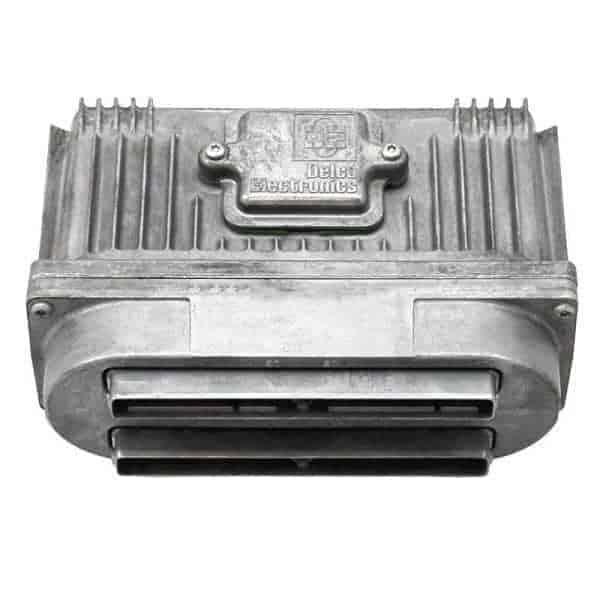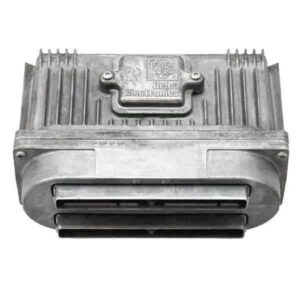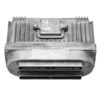Restore Your Vehicle’s Brain and Get Back on the Road
Is your 1996 Oldsmobile Cutlass or another classic GM vehicle giving you headaches? If you’re dealing with a frustrating no-start condition, erratic engine behavior, or a persistent Check Engine Light that just won’t go away, the culprit is often a failing Powertrain Control Module (PCM). As a technician with over two decades of experience under the hood, I’ve seen firsthand how a faulty PCM can sideline an otherwise reliable car. This isn’t just a component; it’s the central command center for your engine and transmission, and when it fails, everything grinds to a halt.
We offer a dependable and straightforward solution: a replacement PCM (Part Number 16211539), fully programmed to your vehicle’s specific Vehicle Identification Number (VIN). This critical step ensures that the module communicates perfectly with your car’s systems right out of the box. We flash it with the latest GM software updates, which can often resolve performance and drivability issues that were present even before the original module failed. This is the key to a successful repair, saving you a trip to the dealership and the high costs associated with their programming services. Ordering a properly configured 1996 Cutlass PCM is the most important step in restoring your car’s performance and reliability.
Common Signs of a Failing PCM
- ✔ Your vehicle won’t start, or it starts and immediately stalls.
- ✔ You’re experiencing random misfires, a rough idle, or poor acceleration.
- ✔ The Check Engine Light is on, with stored Diagnostic Trouble Codes (DTCs) like P0601, P0602, or P0605, indicating internal module failure.
- ✔ You notice a sudden and significant drop in fuel economy.
- ✔ The automatic transmission is shifting harshly or at the wrong times.
- ✔ Your vehicle fails an emissions test due to communication errors.
Case Study: A Tricky Diagnosis
A few months back, a 1996 Buick LeSabre with the 3.8L V6 came into my shop. The owner was frustrated; he’d replaced the spark plugs, wires, and even the fuel pump, but the car still had a baffling intermittent stalling issue. It would run fine for 20 minutes, then die at a stoplight and refuse to restart for half an hour. No consistent codes were being thrown, just a generic misfire code now and then. After hooking up my scan tool and monitoring live data, I noticed the injector pulse width would suddenly drop to zero right before it stalled. This pointed away from the fuel system and directly to the computer. We installed a VIN-programmed PCM, and the problem vanished instantly. It’s a classic example of how a failing 1996 Cutlass PCM (or its equivalent in another GM model) can mimic other component failures, making a proper diagnosis essential.
A Straightforward Guide to Installation
- ✔ Safety First: Always disconnect the negative terminal from your vehicle’s battery before starting any electrical work.
- ✔ Locate the PCM: On most of these 1996 GM vehicles, the PCM is located in the engine bay, often inside the air filter box housing for protection. You may need to remove the air filter assembly to access it.
- ✔ Disconnect the Harnesses: Carefully unclip and remove the electrical wiring harnesses connected to the old module. These connectors have locking tabs that must be released before they can be pulled off.
- ✔ Swap the Module: Unbolt the old PCM from its mounting bracket. Secure the new, pre-programmed module in its place.
- ✔ Reconnect Everything: Firmly plug the wiring harnesses into the new PCM until they click into place. Reinstall the air filter assembly and reconnect the negative battery terminal.
- ✔ Perform Security Relearn: Many GM vehicles of this era require a simple security relearn procedure to allow the car to start. Typically, this involves turning the key to the ‘ON’ position for 10-15 minutes, then ‘OFF’ for 10 seconds, and repeating this cycle three times. Your vehicle’s service manual will have the exact steps.
Verified Vehicle Compatibility
This module is a direct replacement for service numbers 88963800, 16211539, and 16231853. It is guaranteed to fit the following 1996 models:
BERETTA (3.1L)
BONNEVILLE (3.8L)
CENTURY (3.1L)
CIERA (3.1L)
CORSICA (3.1L)
CUTLASS (3.1L, 3.4L)
EIGHTY EIGHT (3.8L)
GRAND AM (3.1L)
GRAND PRIX
LESABRE (3.8L)
LUMINA CAR (3.1L, 3.4L)
LUMINA VAN (3.4L)
MONTE CARLO
NINETY EIGHT (3.8L)
PARK AVENUE (3.8L)
REGAL
RIVIERA (3.8L)
SILHOUETTE (3.4L)
SKYLARK (3.1L)
TRANS SPORT (3.4L)
Don’t let a bad computer keep your car off the road. By ordering this pre-programmed 1996 Cutlass PCM, you’re choosing a reliable, cost-effective repair that gets the job done right.
Frequently Asked Questions
Frequently Asked Questions
Do I need to do anything after installing this PCM?
Because we program the module to your VIN, no further dealer programming is required. However, you will likely need to perform a simple security relearn procedure (also known as a VATS relearn), which can be done at home with just your car key. This procedure syncs the new PCM with your vehicle’s anti-theft system.
What is the difference between an ECM and a PCM?
ECM stands for Engine Control Module, while PCM stands for Powertrain Control Module. In modern vehicles like your 1996 GM, the PCM is more common as it controls both the engine and the automatic transmission functions from a single unit. For this application, the terms are often used interchangeably.
How do I provide my VIN?
After you complete your purchase, you will receive instructions on how to send us your vehicle’s 17-digit VIN. We cannot ship your part until we receive this information, as the programming is essential for it to function correctly in your car.
Will this fix my car’s specific problem?
This PCM will correct issues directly caused by a faulty computer, such as internal circuit errors (DTC P0601), no-start conditions due to no injector pulse, or erratic transmission behavior commanded by the module. While it solves many problems, it’s important to ensure your vehicle has been properly diagnosed, as other failing sensors or wiring issues can sometimes mimic PCM failure.
Is this part difficult to install for a DIYer?
For most DIY enthusiasts with basic tools, this is a very manageable job. The PCM is typically easy to access, and the installation involves swapping a few bolts and electrical connectors. The most important step is performing the security relearn correctly after installation.



